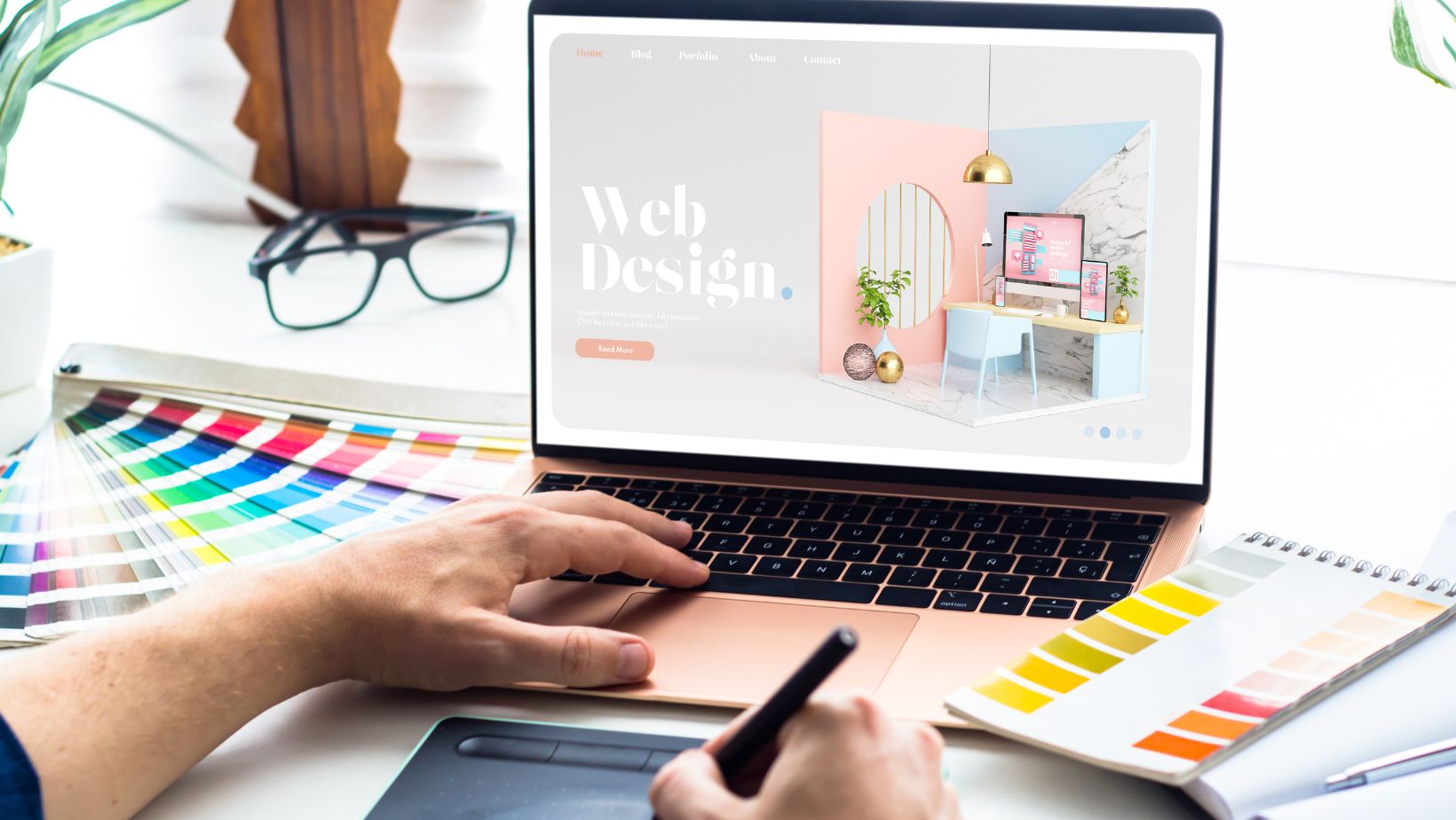Designing websites for a global audience comes with many challenges: layouts shift, fonts render differently, loading speed varies by region, and content delivery networks may show different versions of the same resource depending on the user’s location. For web designers who care about accuracy, consistency, and quality, evaluating websites under different network conditions is essential. This is where proxy servers play a surprisingly powerful role.
Proxy servers allow designers to preview websites as if they were browsing from another region, another network type, or even another device environment. This capability is a game-changer for testing localization, responsive layouts, CDN performance, UX flow, and visual rendering. Yet, not all proxy providers are equally convenient for design work. Some prioritize data collection, some focus on automation, and others are built for corporate infrastructure.
This article highlights the top 5 proxy services best suited specifically for web designers, based on usability, reliability, network stability, and practical workflow integration.
Why Web Designers Benefit from Proxy Servers
Web designers don’t just design pixel-perfect interfaces. They must ensure real users experience the website the same way the designer intended. A design that looks flawless in one location may break or shift somewhere else. For instance:
- A localized language version may increase text length and push UI elements out of alignment.
- Images may load in lower quality due to different CDN routing rules.
- Performance-heavy websites may appear broken on slower networks.
- Some regional services display entirely different layouts or widget sets.
A proxy server helps web designers:
- View the website as a user from another region would.
- Simulate desktop vs. mobile network conditions.
- Confirm whether CDN-delivered styles and media match expectations.
- Conduct competitor layout analysis without personalization or tracking bias.
- Ensure responsive breakpoints perform consistently.
Think of a proxy as a design periscope — it lets you look at your work from any angle, without leaving your desk.
What to Look for When Choosing a Proxy Provider
For web designers, the perfect proxy isn’t the most complex or technical one. It’s the one that is stable, clear to use, and accurate in representation.
Here are the criteria that matter:
| Feature | Why It Matters | Web Design Use Case |
| Stable Speed & Bandwidth | Ensures pages load smoothly, preventing false layout “jumps.” | Checking how hero images scale when loaded. |
| Wide Location Coverage | Allows realistic testing of localization and user experience. | Validating European vs. US homepage variants. |
| Simple Configuration | Saves time and reduces workflow disruption. | Quickly switching regions during testing. |
| Mobile Network Options | Lets you test true mobile UI behaviors. | Ensuring mobile header/navigation works cleanly. |
| Flexible Pricing | Good for freelancers and agencies managing multiple clients. | Paying only for required testing volume. |
When these conditions are met, a proxy becomes as essential a tool as your IDE or design system.
Each of the following providers offers a different balance of functionality and cost. Choose based on workload, client geography, and level of testing complexity.
1. Proxys.io — Perfect for Practical and Accessible Web Design Use
Proxys.io is well-suited for designers and small studios who want fast configuration, reliable IPs, and straightforward usability without needing enterprise-scale systems. It provides HTTP, HTTPS, SOCKS5, and mobile proxy access with multiple geographic options.
Designers appreciate Proxys.io because setup requires no complex scripting or automation knowledge. You can copy the proxy credentials, paste them into your browser or device settings, and start viewing your website from another country immediately.
Key Advantages for Web Designers:
- Straightforward UI — You spend time designing, not configuring network tools.
- Stable bandwidth performance — Prevents false UI glitches caused by slow responses.
- Mobile proxy support — Helpful for genuinely testing mobile layouts under real operator conditions.
- Affordable entry pricing — Ideal for freelancers and creative agencies.
When It Works Best:
- Testing localized page versions (e.g., EN vs. ES vs. FR).
- Reviewing website loading speed and layout from different regions.
- Conducting visual competitor audits discreetly.
- Performing mobile-first responsiveness validation.
Explore here: Proxys.io
Possible Considerations:
- While coverage is broad, city-level or operator-specific targeting may be more limited than ultra-premium services.
- Some advanced automation features may be simpler than what enterprise systems offer.
Ideal For: Freelance designers, boutique web studios, UX developers working on international projects.
2. Smartproxy — Great for Frequent Location Switching
Smartproxy is a polished, user-friendly service with a large pool of rotating residential and mobile proxies. This makes it particularly useful when you work across global markets and need to frequently verify designs in different countries.
Its dashboard is intuitive, and browser extensions simplify switching endpoints while testing design responsiveness.
Why Designers Choose Smartproxy:
- Easy switching between hundreds of global locations.
- Residential IPs allow realistic user environmental testing.
- Strong UI and documentation reduce complexity.
Best Use Cases:
- Testing UI consistency across major global markets.
- Reviewing multilingual website layouts.
- Demonstrating region-based UX differences to clients during presentations.
Potential Drawback:
Pricing may be higher than compact providers if you aren’t using high traffic volumes.
Ideal For: Design teams with multi-regional or multilingual deliverables.
3. Oxylabs — Perfect for Enterprise-Level Design Workflows
Oxylabs is a premium proxy service trusted by large companies. It offers huge IP pools, exceptionally stable uptime, city-level targeting, and advanced routing. While many of its features are beyond what a casual designer needs, for large agencies and international brands, this reliability is essential.

Oxylabs Benefits for Web Designers:
- City and region-level testing lets you see real localized rendering.
- Very high uptime ensures stable asset and media loading.
- Suitable for team workflows requiring consistent global access.
Where It Shines Most:
- Testing complex web applications with dynamic UI states.
- Projects where client quality expectations are extremely high.
- Situations requiring precision in CDN and cache-load behavior.
Primary Tradeoff:
Premium cost. This is a tool for major agencies, large website systems, or demanding client engagements.
Ideal For: Enterprise web design teams, digital agencies working with global brands.
4. IPRoyal — Balanced and Budget-Friendly Without Sacrificing Options
IPRoyal offers a healthy midpoint for designers: good IP diversity, multiple proxy types, flexible payment options, and reasonable pricing. It works well for designers managing multiple client sites or testing user experiences from several regions.
Why It Fits Web Designers:
- Simple to start, doesn’t require long-term contracts.
- Easy to rotate locations across continents.
- Good pricing makes it friendly for freelancers and SMB studios.
Use Cases:
- Reworking UI for international ecommerce stores.
- Visual quality assurance across markets.
- Regular design review workflows.
Limitations:
- Network depth (such as precision targeting) may be less refined than top-tier providers.
Ideal For: Designers who need regular testing but aren’t handling global corporate deployments.
5. Webshare — Best for Quick, Lightweight Testing
Webshare focuses on simplicity and affordability. It even offers a free-tier option, making it perfect when you need quick, occasional, low-friction design testing.
Advantages:
- Very easy setup — start testing in minutes.
- Budget-friendly, suitable for students, freelancers, or early-stage agencies.
- Good for refreshing layouts across several countries on demand.
Considerations:
- Not as powerful for large-scale or highly nuanced testing.
- Network depth and speed may vary under load.
Ideal For: Designers who need a backup or supplementary testing proxy environment.
Example Workflow: How a Designer Uses Proxies During a Project
Here’s a practical sequence:
- Design UI in Figma or Sketch.
- Implement responsive layout in code.
- Test on local device.
- Switch proxy to another region.
- View site through browser.
- Identify layout shifts caused by fonts, spacing, CDN, or localization.
- Adjust CSS and typography accordingly.
- Repeat across several countries and mobile operator conditions.
This ensures the final design behaves reliably across the real world, not just in your local environment.
Final Thoughts
Proxy servers give web designers a clear window into the real user experience. Whether you’re testing language localization, mobile UX, image delivery performance, or multi-region layouts, proxies allow you to validate your design decisions under real network conditions — the conditions that truly matter.
- If you’re working as a freelancer or in a small studio → Proxys.io offers the best balance of simplicity, speed, and practicality.
- If your work spans many regional markets → Smartproxy makes switching efficient.
- For enterprise-grade reliability → Oxylabs is unmatched.
- For balanced affordability → IPRoyal is a smart middle ground.
- For fast lightweight testing → Webshare is a quick, friendly tool.
A designer who tests in real conditions designs better, smarter, and more confidently.


